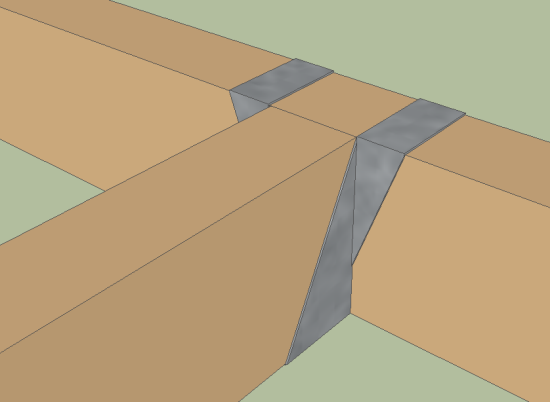

Steel sections used in portal frame structures are usually specified in grade S355 steel. The following discussion of the design process and its constituent parts is intended to give the designer an understanding of the inter-relationship of the various elements of the structure with its final construction, so that the decisions required at each stage can be made with an understanding of their implications. In the design and construction of any structure, a large number of inter-related design requirements should be considered at each stage in the design process.

(Image courtesy of Kloeckner Metals UK Westok) The sections used cannot develop plastic hinges at a cross-section, so only elastic design is used. Where transport limitations impose requirement for splices, they should be carefully detailed, to preserve the architectural features. Rafters may be fabricated from cellular beams for aesthetic reasons or when providing long spans. It will be necessary to provide purlin cleats of varying height to achieve the curved external profile.

Foundation framer 2.0 series#
Guidance on the stability of curved rafters in portal frames is given in SCI P281.Īlternatively, the rafter can be fabricated as a series of straight elements. The curved member is often modelled for analysis as a series of straight elements. Because of transport limitations rafters longer than 20 m may require splices, which should be carefully detailed for architectural reasons. Portal frames may be constructed using curved rafters, mainly for architectural reasons. Where the span of a portal frame is large and there is no requirement to provide a clear span, a propped portal frame can be used to reduce the rafter size and also the horizontal shear at the foundations.Ī mansard portal frame may be used where a large clear height at mid-span is required but the eaves height of the building has to be minimised. It is a simple variation of the pitched roof portal frame, and tends to be used for smaller buildings (up to 15 m span).
Foundation framer 2.0 software#
The high axial forces introduced in the frame when a tie is used necessitate the use of second-order software when analysing this form of frame.Ī mono pitch portal frame is usually chosen for small spans or because of its proximity to other buildings. A tie may be useful to limit spread in a crane-supporting structure. In a tied portal frame the horizontal movement of the eaves and the bending moments in the columns and rafters are reduced. The spread of the frame at crane rail level may be of critical importance to the functioning of the crane requirements should be agreed with the client and with the crane manufacturer. Use of a tie member or rigid column bases may be necessary to reduce the eaves deflection. Where a travelling crane of relatively low capacity (up to say 20 tonnes) is required, brackets can be fixed to the columns to support the crane rails.

Portal frame with internal mezzanine floor The assessment of frame stability must include the effect of the mezzanine guidance is given in SCI P292. Office accommodation is often provided within a portal frame structure using a partial width mezzanine floor. Portal frame with internal mezzanine floor Generally fabricated from UB sections with a substantial eaves haunch section, which may be cut from a rolled section or fabricated from plate. This information only provides typical details and is not meant to dictate any limits on the use of any particular structural form. Frame types described below give an overview of types of portal construction with typical features illustrated. Many different forms of portal frames may be constructed. Portal framed structures - overview Types of portal frames


 0 kommentar(er)
0 kommentar(er)
